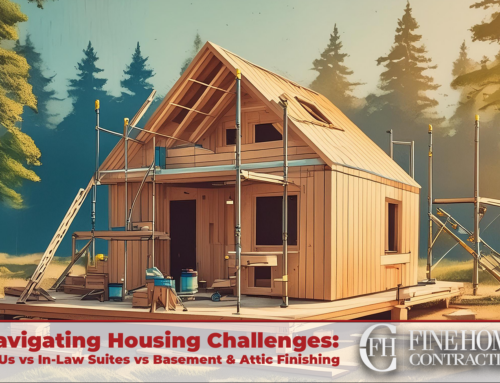Connecticut is a treasure trove of stunning architecture. While all of New England’s states offer architectural history and a wealth of Victorian properties, Connecticut takes a step beyond the rest when it comes to blending the state’s rich history with innovative modern designs and trends. From charming colonial-era buildings to sleek modernist masterpieces, each historic home in Connecticut tells a unique story. Whether you’re a history buff, an architecture enthusiast, looking at tacking a historic home remodel in Connecticut, or just love exploring beautiful places, you’ll be amazed by the variety and beauty of these structures. Join us as we take a tour of the most architecturally important buildings in Connecticut, each with its own unique charm and story.
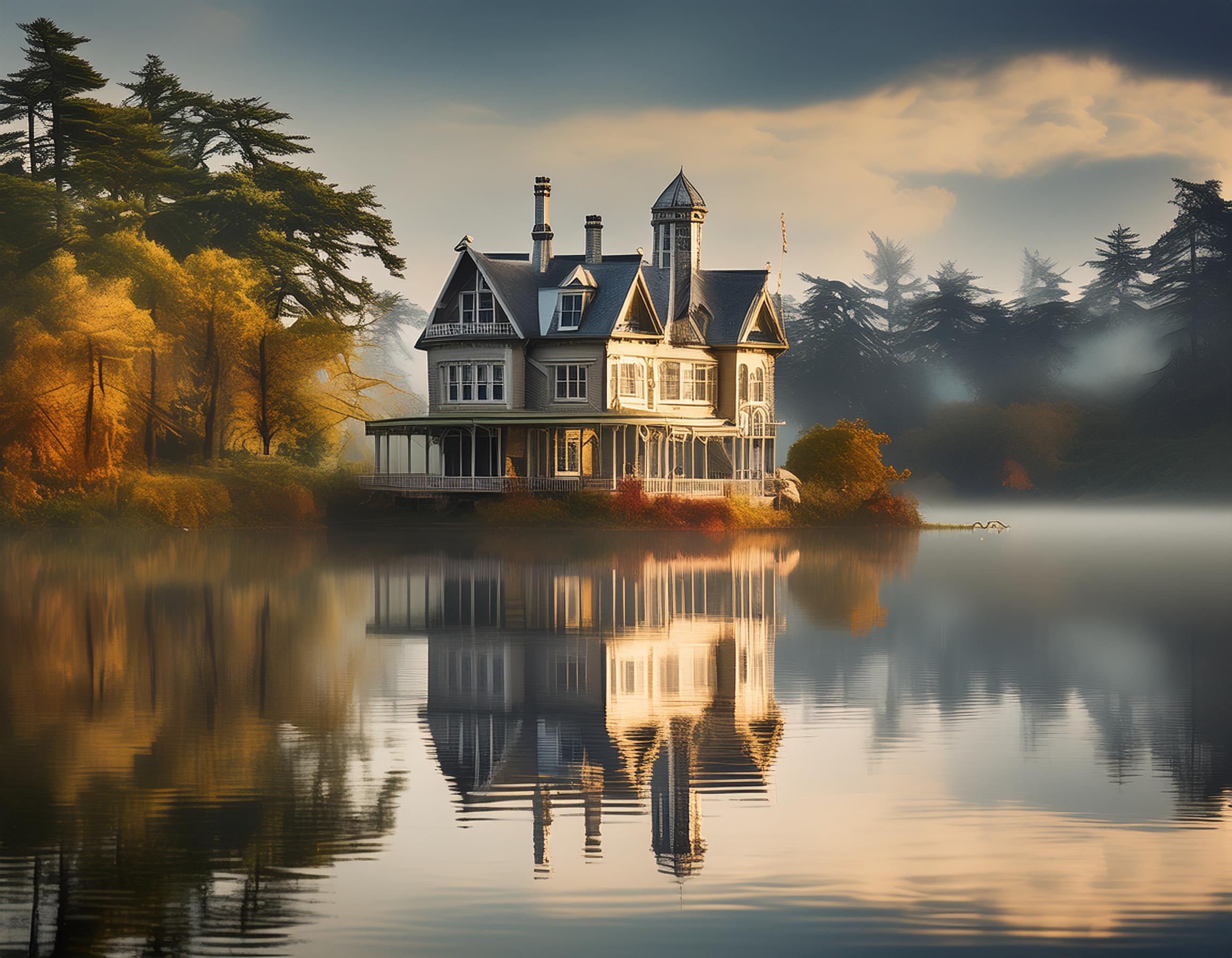
Hartford’s State Capitol Building
The Hartford State Capitol Building is an iconic structure in Connecticut, showcasing an exquisite blend of Eastlake, Second Empire, and Gothic architectural styles. Completed in 1878, it features a distinctive gold leaf dome, intricate stone carvings, and opulent interiors adorned with stained glass windows and elaborate murals. The building not only serves as the seat of Connecticut’s government but also as a symbol of the state’s rich history and architectural grandeur.
- Architect: Richard M. Upjohn
- Location: Hartford
- Date Constructed: 1878
- Style: Eastlake, Second Empire, Gothic
- Address: 210 Capitol Avenue, Hartford, CT 06106
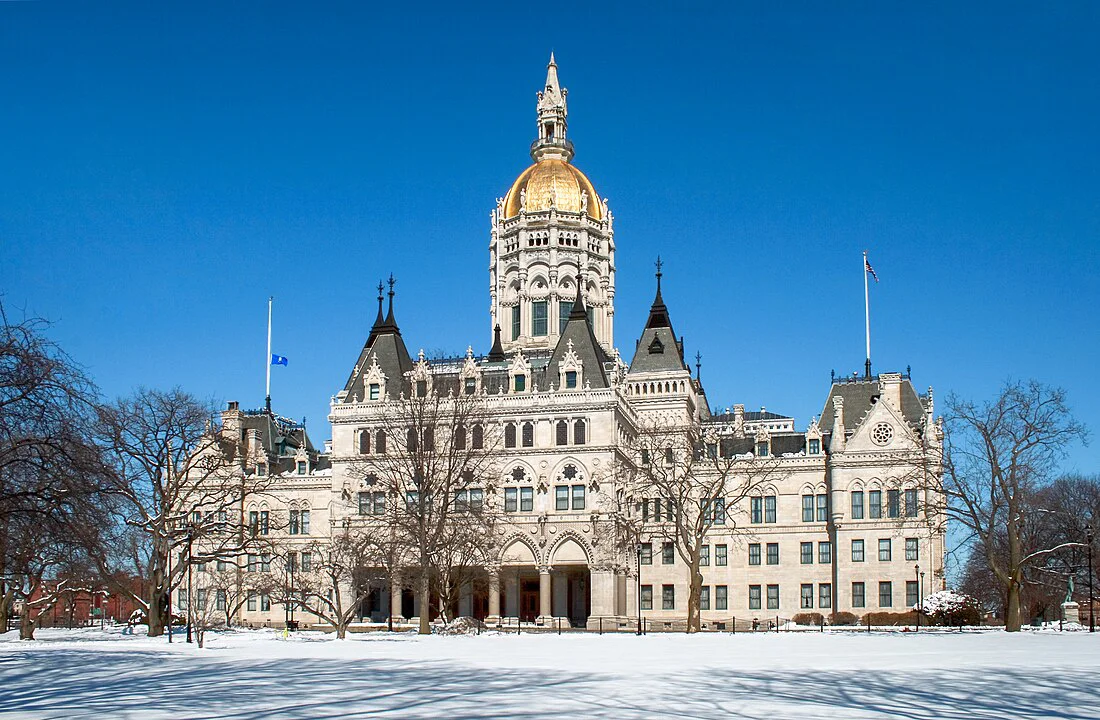
By Ragesoss - Own work, CC BY-SA 4.0, https://commons.wikimedia.org/w/index.php?curid=3611126
Yale University’s Sterling Memorial Library
Sterling Memorial Library at Yale University is a prime example of Collegiate Gothic architecture. Designed by James Gamble Rogers and completed in 1931, the library is renowned for its awe-inspiring design that includes soaring towers, ornate stone carvings, and stained glass windows. The library’s interior features a grand nave, reminiscent of a cathedral, showcasing Yale’s commitment to preserving traditional architectural forms while serving modern educational needs.
- Architect: James Gamble Rogers
- Date Constructed: 1931
- Style: Collegiate Gothic
- Location: 120 High Street, New Haven, CT 06511
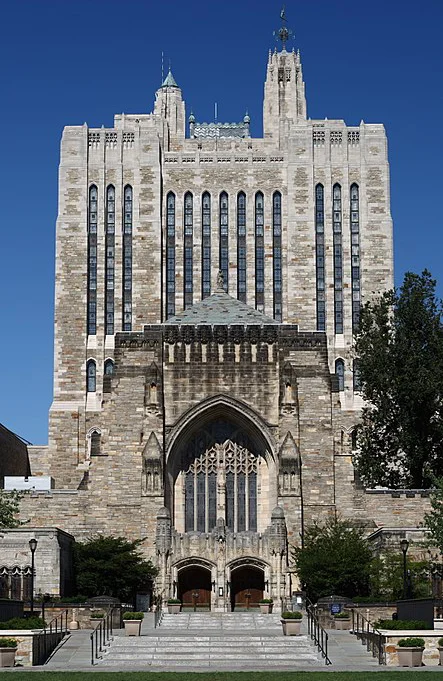
By Ragesoss - Own work, CC BY-SA 3.0, https://commons.wikimedia.org/w/index.php?curid=4699576
The Glass House
The Glass House, designed by renowned architect Philip Johnson, is a modernist masterpiece located in New Canaan. Completed in 1949, this minimalist structure is made entirely of glass and steel, offering an unobstructed view of the surrounding landscape. The building’s simplicity, transparency, and integration with nature exemplify the principles of modern architecture and have made it a landmark in the history of American design.
- Architect: Philip Johnson
- Location: 199 Elm Street, New Canaan, CT 06840
- Date Constructed: 1949
- Style: Modernist
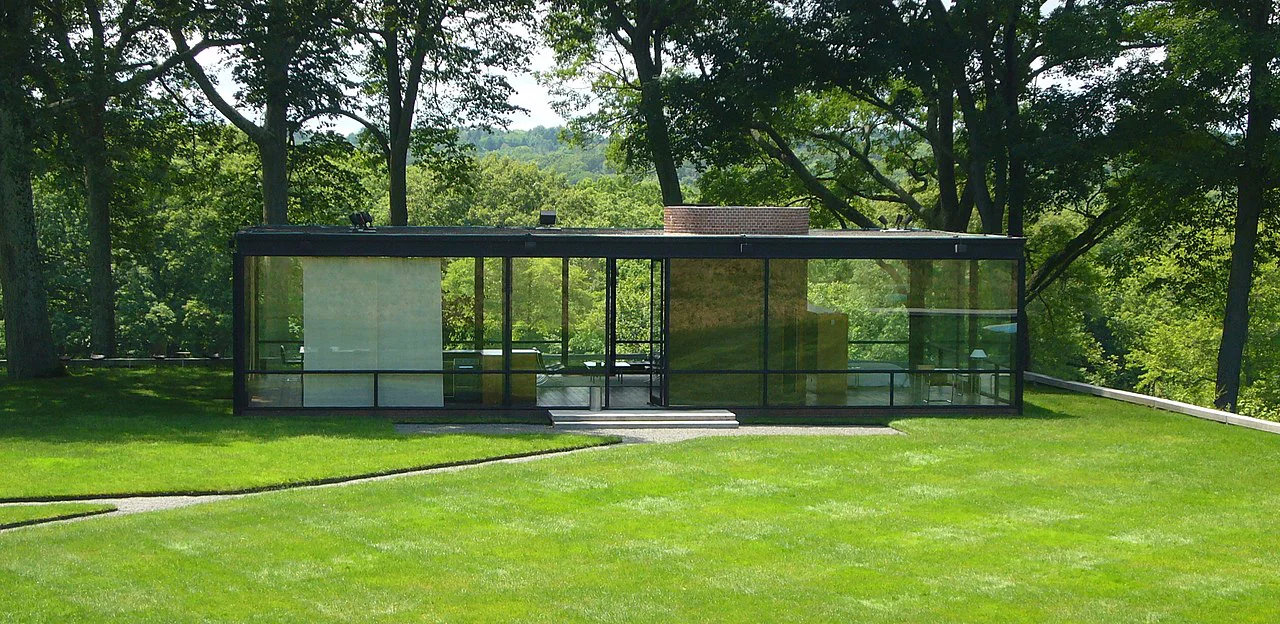
By Staib - Own work, CC BY-SA 3.0, https://commons.wikimedia.org/w/index.php?curid=7797606
Mark Twain House
The Mark Twain House in Hartford is a Gothic Revival style mansion that was the residence of famed author Samuel Clemens (Mark Twain) from 1874 to 1891. Designed by Edward Tuckerman Potter, the house features distinctive steep gables, intricate woodwork, and a picturesque silhouette. The interior, designed by Louis Comfort Tiffany, is equally remarkable with its lavish decorations and innovative design elements. This house not only served as Twain’s home but also as the place where he wrote some of his most famous works.
- Architect: Edward Tuckerman Potter
- Location: 351 Farmington Avenue, Hartford, CT 06105
- Date Constructed: 1874
- Style: Gothic Revival

By Makemake, CC BY-SA 3.0, https://commons.wikimedia.org/w/index.php?curid=751488
Philip Johnson’s Hodgson House
Philip Johnson’s Hodgson House, also located in New Canaan, is another significant modernist structure. Built in 1951, this house features Johnson’s signature minimalist design with clean lines, open spaces, and extensive use of glass. The Hodgson House is part of the New Canaan modernist movement, which sought to redefine residential architecture in the mid-20th century.
- Architect: Philip Johnson
- Location: 881 Ponus Ridge, New Canaan, CT 06840
- Date Constructed: 1951
- Style: Modernist
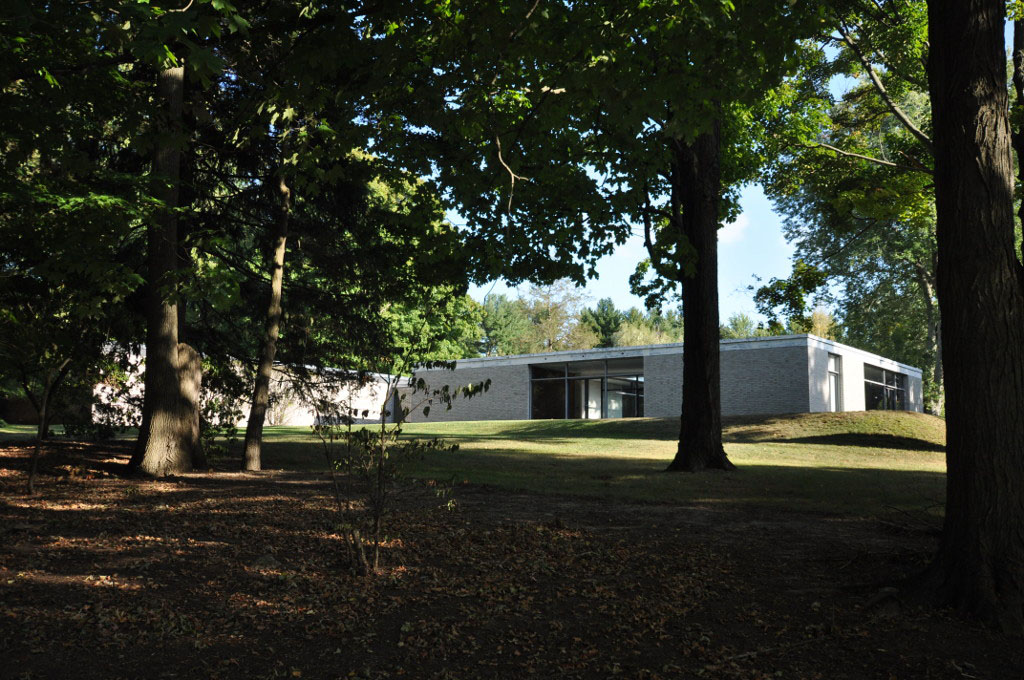
By Magicpiano - Own work, CC BY-SA 4.0, https://commons.wikimedia.org/w/index.php?curid=51543375
Beinecke Rare Book Library at Yale
The Beinecke Rare Book & Manuscript Library at Yale University is one of the world’s largest buildings devoted entirely to rare books and manuscripts. Designed by Gordon Bunshaft and completed in 1963, the library is renowned for its unique design, featuring a translucent marble exterior that allows natural light to illuminate the interior while protecting the rare materials inside. The building’s minimalist aesthetic and innovative use of materials make it a standout in modern architectural design.
- Architect: Gordon Bunshaft
- Location: 121 Wall Street, New Haven, CT 06511
- Date Constructed: 1963
- Style: Modernist
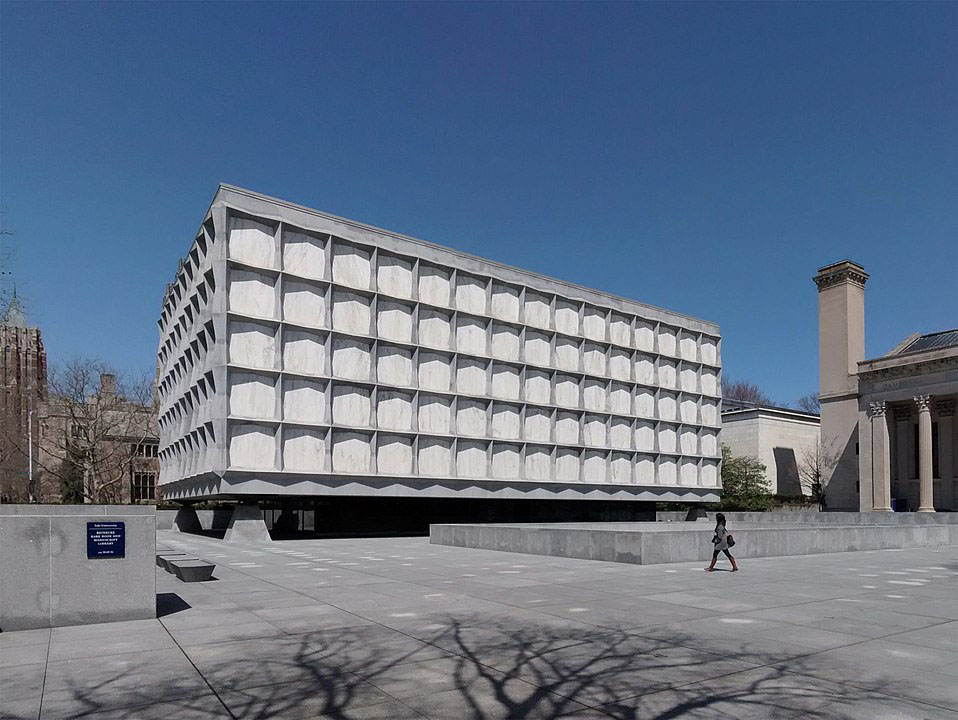
By Gunnar Klack - Beinecke Rare Book & Manuscript Library, CC BY-SA 2.0, https://commons.wikimedia.org/w/index.php?curid=82344104
Gillette Castle
Gillette Castle, located in East Haddam, is an eccentric structure designed by actor William Gillette. Completed in 1919, the castle is a whimsical blend of medieval and rustic architectural styles, featuring irregular stonework, wooden interiors, and secret passageways. The unique design of Gillette Castle, combined with its picturesque setting overlooking the Connecticut River, makes it a significant architectural landmark.
- Architect: William Gillette
- Location: 67 River Road, East Haddam, CT 06423
- Date Constructed: 1919
- Style: Medieval, Rustic

By Original uploader was Kevinpepin at en.wikipedia - Transferred from en.wikipedia, Public Domain, https://commons.wikimedia.org/w/index.php?curid=4099864
Hill-Stead Museum
The Hill-Stead Museum in Farmington is a remarkable example of Colonial Revival architecture combined with an extensive art collection. Designed by Theodate Pope Riddle and completed in 1901, the museum was originally a private residence. It features a stately facade, elegant interiors, and beautifully landscaped grounds. The museum houses an impressive collection of Impressionist masterpieces, enhancing its cultural and architectural significance.
- Architect: Theodate Pope Riddle
- Location: 35 Mountain Road, Farmington, CT 06032
- Date Constructed: 1901
- Style: Colonial Revival
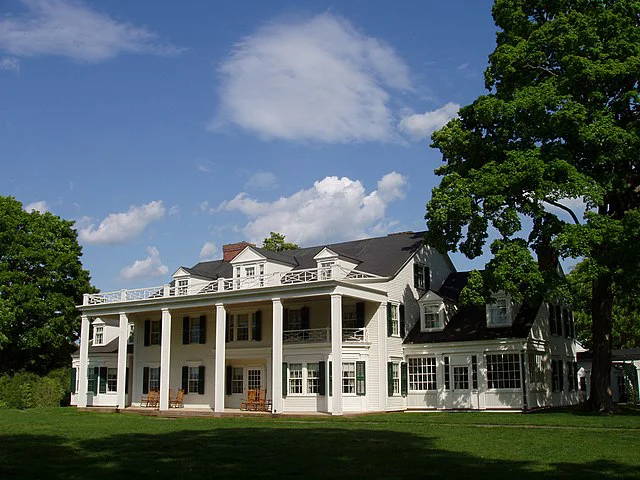
By Daderot - Own work, CC BY-SA 3.0, https://commons.wikimedia.org/w/index.php?curid=2151554
The Hotchkiss-Fyler House Museum
The Hotchkiss-Fyler House Museum in Torrington is an exquisite example of Queen Anne style architecture. Built in 1900, the house features a complex roofline, decorative woodwork, and an asymmetrical facade. The interior is equally ornate, with richly decorated rooms that reflect the opulence of the late 19th century. The house now serves as a museum, preserving the architectural and cultural heritage of the region.
- Architect: Charles S. Palmer
- Location: 192 Main Street, Torrington, CT 06790
- Date Constructed: 1900
- Style: Queen Anne
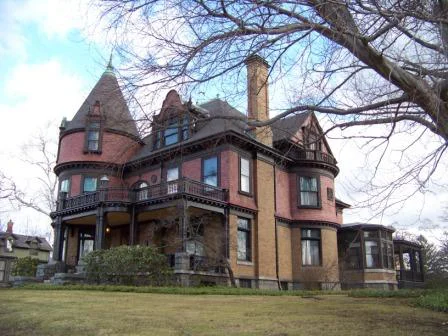
By Doncram - Own work, CC BY-SA 3.0, https://commons.wikimedia.org/w/index.php?curid=11235705






